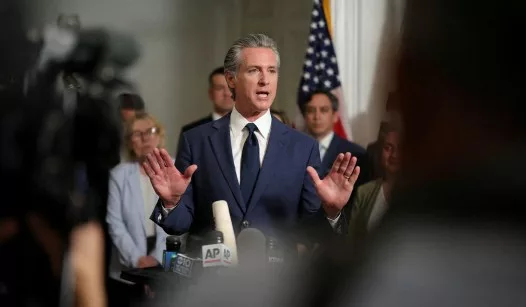California Governor Gavin Newsom has long positioned himself as a champion of climate action, advocating for aggressive measures to combat climate change and reduce the state’s reliance on fossil fuels. However, recent developments have put his administration in a precarious situation, as the ongoing battle against the oil industry has led to an unforeseen crisis that has left him scrambling for solutions.
As California continues to push forward with stringent regulations aimed at curbing oil production and promoting renewable energy sources, the oil industry finds itself under unprecedented pressure. This has resulted in a complex relationship between the state and the very industry that has fueled its economy for decades. Newsom, who once boldly declared a war on oil, is now reaching out to the beleaguered industry, urging them not to abandon California amidst the turmoil.
The backdrop of this crisis is a series of legislative measures and executive actions aimed at reducing greenhouse gas emissions and transitioning to a more sustainable energy future. These efforts have included calls for the phasing out of oil extraction, increased taxes on fossil fuels, and ambitious targets for electric vehicle adoption. While these initiatives have garnered support from environmental advocates, they have also sparked significant backlash from oil companies and their supporters, who argue that such drastic measures threaten jobs and economic stability.
In recent months, California has faced a series of challenges that have exacerbated tensions between the state and the oil industry. Rising fuel prices, supply chain disruptions, and concerns over energy reliability have raised alarms among residents and businesses alike. As the state grapples with these issues, Newsom’s administration has found itself in a bind, caught between its climate goals and the practical realities of energy needs.
The governor’s recent appeals to the oil industry reflect a growing acknowledgment of the complex dynamics at play. Newsom has called for collaboration and dialogue, recognizing that a complete abandonment of fossil fuels is neither feasible nor desirable in the short term. The reality is that California’s economy is still heavily reliant on oil, and a sudden withdrawal could lead to dire consequences for both consumers and the state’s fiscal health.
Critics of Newsom’s approach argue that his administration’s heavy-handed tactics have alienated key stakeholders and created an adversarial environment. They contend that a more balanced and cooperative strategy is needed to achieve meaningful progress on climate goals without sacrificing economic stability. As the governor navigates this delicate landscape, he faces mounting pressure from both environmentalists who demand swift action and industry leaders who seek a more measured approach.
The situation has also sparked a broader conversation about the future of energy in California and the role of government in shaping that future. With the state aiming for a carbon-neutral economy by 2045, the question remains: how can California transition away from fossil fuels while ensuring energy security and economic resilience?
As the crisis unfolds, Newsom’s leadership will be put to the test. The stakes are high, not just for the oil industry, but for millions of Californians who depend on stable energy prices and reliable access to fuel. The governor’s ability to navigate this challenging environment will ultimately determine the success of his climate agenda and the future of California’s energy landscape.
In conclusion, Gavin Newsom’s ambitious climate initiatives are facing significant challenges as the state confronts a crisis stemming from its war against oil. His recent outreach to the oil industry signals a shift in strategy that underscores the complexities of balancing environmental goals with economic realities. As California continues to forge ahead in its fight against climate change, the path forward will require collaboration, innovation, and a willingness to adapt to the ever-changing landscape of energy production and consumption.
